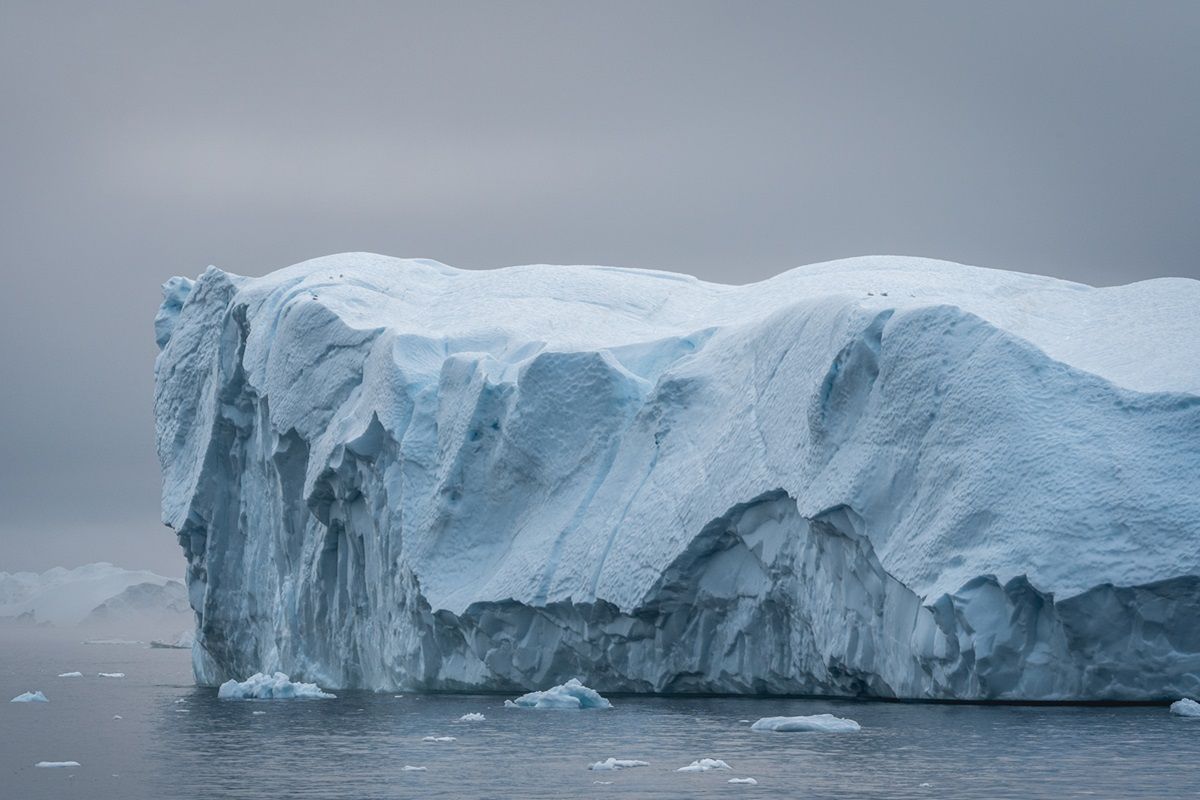In 2022, researchers studying satellite images of East Antarctica saw something that surprised and disturbed them. An ice shelf twenty times as large as the island of Manhattan, called the Conger ice shelf, had suddenly fragmented into icebergs and floated away.
The Antarctic continent is ringed by ice shelves where glacial ice extends outward from the continent onto the surface of the oceans. Breaking and detachment at the edges of these ice shelves is an ongoing natural process. But, over the last several decades, scientists have watched in alarm as several large ice shelves, all in West Antarctica, have totally disintegrated.
This change appears to be caused by the warming of global climate due to human activities like burning fossil fuels. Researchers are worried that faster melting of Antarctic ice due to climate change will cause global sea levels to rise.
The ice shelves surrounding Antarctica act like a cork in a bottle, restraining the flow of glacial ice from the continent out onto the sea. When they collapse, a restraining force on landed ice is lost and more ice flows into the sea to melt. In the past, concern has focused on West Antarctica. The collapse of the Conger ice shelf, in East Antarctica, came as a big surprise because geoscientists thought the ice of East Antarctica was stable.
Researchers think that shifting ocean currents brought warmer seawater to the area and contributed to the collapse. The collapse raises new concerns about East Antarctica. The Conger ice shelf is near the Denman Glacier, which holds enough ice to raise global sea levels by five feet if it ever melted.
A special thanks goes to Richard S. Jones, Monash University, Clayton, Victoria, Australia, for reviewing today's episode.
Learn more
- Black carbon pollution and melting ice in Antarctica
- Greenland's Ice Sheet Is Melting
- What are frost quakes?
Sources
Walker et. al. The multi-decadal collapse of East Antarctica’s Conger-Glenzer ice shelf, Nature Geoscience Published online December 3, 2024. doi: 10.1038/s41561-024-01582-3.
J.D. Willie et al. The extraordinary March 2022 East Antarctica “heat” wave, part II: Impacts on the Antarctic Ice Sheet. Journal of Climate. Vol. 37, February 1, 2024, p. 779. doi: 10.1175/JCLI-D-23-0176.1.
Ribeiro et al. Oceanic regime shift to a warmer continental shelf adjacent to the Shackleton Ice Shelf, East Antarctica. Journal of Geophysical Research Oceans. Vol. 128, November 2023, e2023JC019882. doi: 10.1029/2023JC019882.
S.S. Thompson et al. Glaciological history and structural evolution of the Shackleton Ice Shelf system, East Antarctica, over the past 60 years. The Cryosphere. Published online January 16, 2023. doi: 10.5194/tc-17-157-2023.
C.R. Stokes et al. Response of the East Antarctic Ice Sheet to past and future climate change. Nature. Vol. 608, August 11, 2022, p. 275. doi: 10.1038/s41586-022-04946-0.










